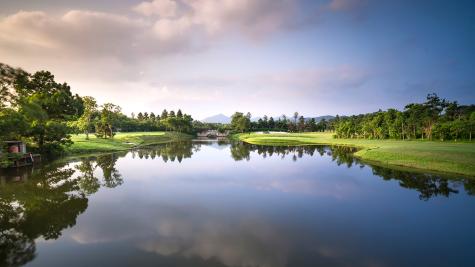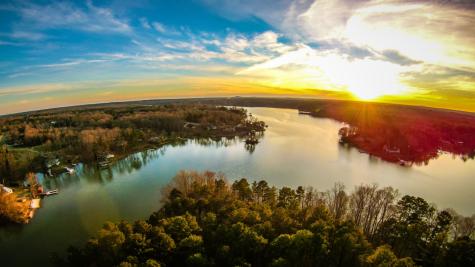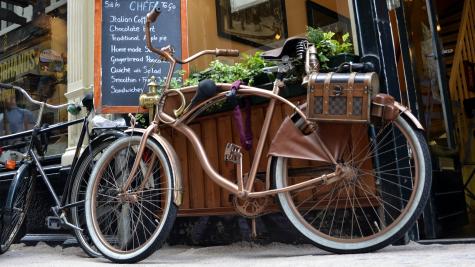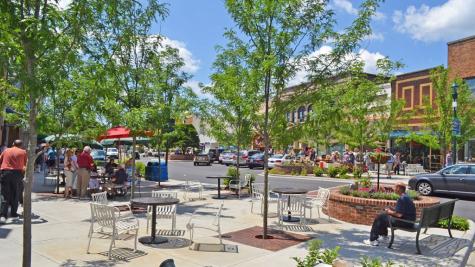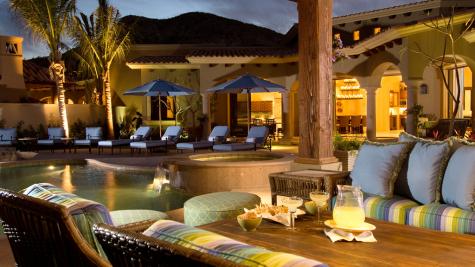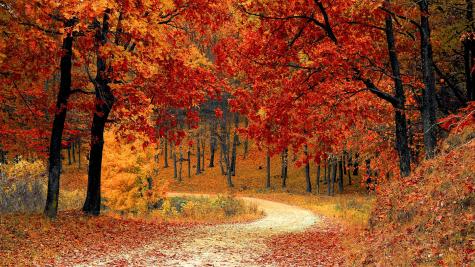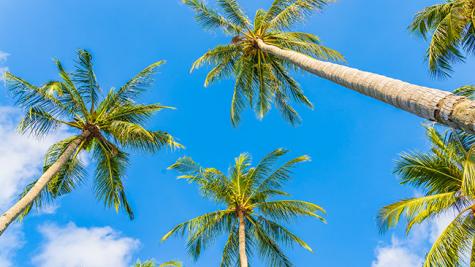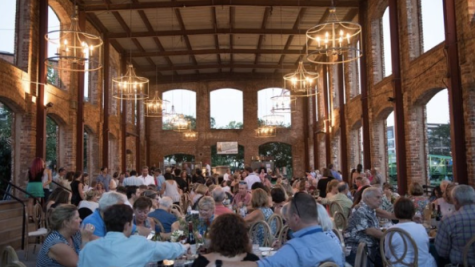Panama Central America - US Retirement Haven
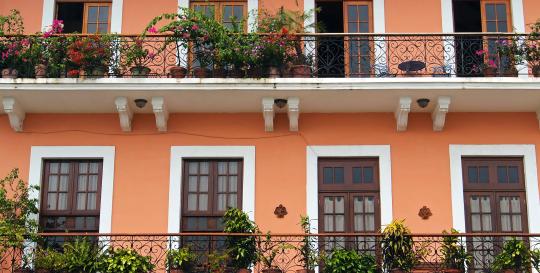
For years, we’ve heard about how much money Baby Boomers can save by moving overseas at retirement. As spoiled Americans, we wondered how extreme the transition might be if the claim is true and where is the best place to live near our family in Florida. Our travels took us the the Republic of Panama branding a name for itself as the most American friendly country in Central America. In fact in 2009, Business Week named it “The New Florida”. With no hurricanes, no snow or state income tax, what’s not to like?
Courting the large number of retiring American’s, Panama Pensionado Visa holders receive a long list of generous discounts on travel, medical care, transportation costs and more. With the right counsel, obtaining a Panama Pensionado Visa is quick and inexpensive. The core requirement for an individual - a guaranteed government or 3rd party issued pension of $1,000 a month (for example - social security or annuity). We learned that US citizens can obtain the visa for about $1,000 in legal fees for an individual or approximately $1,700 for a couple. The process seemed easy so we set off to see Panama City, to the beaches of Coronado, Santiago, and the mountain region of Boquete to determine where to live in Panama. What we found fascinated us...
PANAMA CITY - At a first glance, the skyline shouts wealth and money. To us, a cosmopolitan city reflective of South Beach Miami but without the aquamarine colored water and sandy beaches. The Pacific Heights neighborhood is lined with condominium towers reaching up to 70 stories in height. The award winning Trump Ocean Club opened in 2011 and still holds the record for the tallest building in Latin America. Since 2007, Panama’s aggressive business incentive programs have attracted over 100 global corporations to the city. In 2013, foreign investment into Panama exceeded $4 billion. This year, almost 3 million visitors will reach the shores of Panama. The currency is the U.S. dollar making it easy to adapt.
Southwest of downtown is Casco Viejo, the oldest neighborhood in the city. It's being magically transformed. Swanky hotels, outdoor cafes and one of a kind gift shops line the single lane streets lined with terra cotta pavers and flower baskets framing out old fashioned town squares. Architectural styles vary from Spanish Colonial to Modern Contemporary. Just beyond the entrance to the neighborhood a stark contrast with low income housing and the Mercado de Mariscos, an authentic working fish market. Panama's first international boat show was underway at nearby Amador's Flamenco Marina sponsored by Show Management, Fort Lauderdale's largest boat show operator.
Driving around the city could drive an inpatient person insane. Save yourself the stress and leave the driving to the locals. Fortunately, taxis are cheap and drivers have their own communication system nicknamed ‘the honking language’. Drivers honk to let you know they are passing or you’re driving too slow. They honk to say 'hello' or just because it’s not raining. The city is noisy and busy as to be expected.
Construction is happening everywhere. For example, here’s just a few of the major construction projects completed or almost complete over the past three years:
- Panama Canal Expansion - Lane 3
- El Metro De Panama Underground - Line 1 (moves 30,000 people per hour)
- Allbrook Mall - 500+ stores
- Punta Pacifica Hospital - John Hopkins affiliate
- Tocumen International Airport expansion
Panama is experiencing explosive growth! Most people in the city speak English. When we discovered the severe penalties for pickpocketing or minor offenses, we felt a little bit safer knowing Panaman's 'big brothers' are watching out for visitors. The Colon Free Trade Zone is the only area we were warned about from a safety stand point. It’s the second largest free trade zone in the world and is known to attract riff raff.
We had the opportunity to watch a sailboat and two large tankers pass through the two channels of the upper lock of the Panama Canal. The cost for passage ranges from $800 to $400k+ depending on the size of the vessel and weight. In the morning the channel is for vessels heading to the Pacific Ocean and in the afternoon, it switches direction. The purpose of the nine lock system is to raise the vessels up 85 feet from sea level to the higher lake levels of Gatun Lake which is the narrowest stretch across Central America. The Panama Canal generates approximately $6 million dollars in revenue a day. The third lane was under construction is expected to be complete by 2015.
The rainy season hadn’t kicked into full gear just yet. One night, we did experience torrential rainfall and saw evidence of the storm drainage issues that have plagued the Bay of Panama. Rapid growth and poor water treatment design lead to deficient sewer system operations. Locals believe by 2015, the waters of the Bay of Panama should be clean enough to sport swimmers once again.
We met with two American authors during our visit, both residents of Panama for 7+ years. Author Richard Deitrich wrote The New Escape to Paradise - Living and Retiring in Panama. He lives in Boquete. Bob Adams is the author of Retirement Wave and lives in Panama City. Their insight into the past and future of Panama was intriguing.
CORONADO - Panama City’s closest beach escape is located just over an hour away on the Pacific Ocean. Shopping and restaurants give the area a traditional American beach town feel. We toured a high rise condominium building at the Coronado Golf and Beach Club called Playa Coronado. We noticed the Coronado gated community’s main road is in desperate need of repair. The real estate agent we spoke with said property owners have paid to improve their own streets but were relying on the master association to cover the rest.
Mediterranean-style single family homes and beachfront condominiums can be found here. Panoramic views from the 24th floor of the Playa Coronado building where the rooftop swimming pool is located were beautiful. Unfortunately, we were briefly trapped in the building's elevator on the way down spoiling our excitement for Playa Coronado. We found home and condo prices to be similar to those we’d find in the USA.
A word of caution - in Central America, you won’t find a national MLS (multiple listing service) which makes it difficult to become aware of all the properties for sale. Greedy real estate agents promote their own listings so they don't have to split a commission with cooperating broker. To make matters worse, we've found in Panama and Costa Rica, net listings are common which means the seller reveals the bottom line selling price to the listing agent and any amount received above that price is the commission to the listing agent. Add to the ambiguity, you won’t find real estate appraisers to help you determine the fair market value of a property. It's up to you to rely on your own research and leave no stone unturned. Get proof of what's sold in the past 12 months for price comparisons or move on. A trusted Panamanian attorney can help you obtain that information.
As we traveled a little bit further south, Bijoa Beach Resort caught our eye, an American-style gated Coronado community with a four star all inclusive Sheraton Hotel as the centerpiece. Amenities include a 9 hole golf course, private beach with water sports, resort-swimming pools and swim up bars, fitness center, tennis courts, and several restaurants. Modern condominiums can be found here as low as $100k to over $600k. HOA fees are approximately $450 per month with approximately 15 more years of exempt property taxes (in Panama new buildings pay zero property taxes for 20 years).
Overall, there are dozens of billboards lining the highway promising the best new real estate developments and gated Coronado communities. We didn’t feel Coronado Beach is the best area to live on a tight retirement budget.
BOQUETE - Here's where to live in Panama, where the mountains of Germany meet Gatlinburg Tennessee. Elevations begin around 3,000 feet. The heart of the village is located in the valley where the Caldera River passes through the center of town. Annual temperatures average in the mid 70’s during the day and 60’s a night. August - November is the rainiest part of the year. Colorful exotic flowers and hummingbirds please the eye and the soul. Boquete was discovered about 7-8 years ago by US expats searching for a low cost of living in a picturesque place without extreme weather. It’s estimated between 500-1,000 US expats live in Boquete year round making Americans feel less like a minority. The Tuesday Market located next to the Oasis Hotel has become a weekly expat hang out for those tasting the latest organic coffee, seasonal produce, dark chocolate, wellness herbs and artesian creations. More fresh produce can be found daily on the side streets of Central Park.
This charming mountainside town has about 70 restaurants serving up traditional Panamanian fare. A popular hang out is Mike’s Global Grill where two Panamanian beers will run you about $1.33 including the tip. We thought the food at The Riverside Inn was fantastic. The most popular Boquete gated community is Valle Escondido built in early 2000 by Sam Taliaferro. Approximately 170 families live in the attractive master-planned community walking distance from downtown. Amenities include a 9 hole golf course, indoor swimming pool, spa, fitness center, tennis courts and high speed internet. The community has townhomes and large private estate size homes.
Billboards around town encouraged folks to visit Lucero Golf & Country Club which we did. The developer promotes a resort lifestyle with golf and tennis. Four homes have been built to date of the 205 planned. Long range mountain views are impressive. Monthly fees are $660-$700 with condo prices averaging in the $300k's. This is the first golf course we've seen where members are required to own their own golf cart. The 10 mile drive up to the gated entrance should have taken us 5 minutes. Instead, it took almost an hour because of the deep pot holes and severe road erosion into the Boquet gated golf community. In fact, this is the worst road we've seen to date leading to a gated community! Until the road is fully repaired, we would not recommend.
We found prices all across the board in Boquete. For retirees on a budget, small casitas (2 bedroom 2 bath homes) are easy to find. Surprisingly, prices as low as $100k depending on the amount of updating the home needs. Air conditioning is not standard thanks to the cooler mountain temperatures although air conditioning is not a luxury I'd quickly surrender. Utilities are more reasonable in Boquete when you compare the costs to Costa Rica. If you're visiting the area, popular Boquete hotels include the famous Hotel Panamonte, The Oasis along the Caldera River, Hotel Ladera and Valle Escondido Resort. Enrique Malek International Airport in David's recent terminal remodel and runway expansion has added more flights into the Boquete area.
CERRO PUNTA - We ventured through Volcan to the higher elevation mountain town of Cerro Punta where 80% of Panama’s fruits and vegetables are grown. Elevations average around 7,000 feet. The main road weaves through the forest exposing hillsides and valleys with quilt patch-style crops. Pictures don't do justice to the scenic beauty. Roadside produce stands line the street selling super-sized clear bags filled with a mixture of fresh produce for $6. That's not a typo! It was fascinating to see the farmers working the fields on such steep grades. Temperatures average 65 degrees year round. Because of the abundant wildflowers and and lush forest, the area is nicknamed ‘the Land of Hummingbirds’. Homes are much less expensive here than in Boquete because of the rural nature of the country side. Expats are smaller in numbers and more interveted were told. Volcan is the nearest town and is located about 30 minutes in the foothills, where you’ll find a reliable grocery store and local restaurants. We believe expats can easily live here comfortably for $1,500 a month. When you choose to visit, we recommend staying at Hotel Bambito, a five star Swiss chalet style resort in the perfect location to get to know Cerro Punta. Coffee plantation tours, waterfall hikes and bird watching could keep you busy in Panama.
BOCAS DEL TORRO - We didn't make it over to the nine secluded islands of Bocas del Torro although friends traveling with us did and loved it! The thought of us relying on water taxis to get to the mainland for quality medical care and shopping didn't make sense at retirement. If you're going to go and take a look, Bocas del Mar Hotel is ranked the "best small hotel in Panama" by Trip Advisor.
We also considered Ecuador, Columbia and Costa Rica for retirement. The airline flight costs for Miami/Ecuador/Columbia are so expensive, we've ruled out researching those regions. Now with JetBlue's direct flights into Costa Rica from Fort Lauderdale for under $300 round trip, retiring in Costa Rica is on our radar too.
HELPFUL TIPS ABOUT RELOCATING TO PANAMA:
1) Hire a Panamanian lawyer before going to contract for a rental or for purchase, to be sure you’re dealing with the true property owner. In Panama, lawyers are not certified by the BAR. Find out the best way to hold title to protect yourself and your heirs. Ask for the recommendation of a lawyer from a Panamanian local you trust.
2) Be conscious about real estate net listings so you don’t pay the ‘Gringo’ price.
3) Hire a CPA who has experience in filing foreign tax returns in the US and Panama. Tax laws are complicated when you live overseas.
4) Compare the differences between a Panama Pensionado Visa and Friendly Nations Visa (VISA 416) to see which one works best for you. One allows you to work in Panama, the other does not.
5) Learn about Global Health Insurance programs offered by Aetna which can substantially save you money if you live in Panama for more than 183 days a year. These programs cover you in Panama, the US and anywhere in the world.
6) There is no postal mail delivery in Panama. Packages are sent ‘general delivery’ to a pick up facility in Panama. Things will take much longer coming and going from the country. Currently there are three companies in Florida who specialize in forwarding packages to you in Panama which helps, a little.
7) Buy a diesel car and preferably Toyota so automobile parts are readily available.
8) Bringing a pet to Panama is tricky. Jose Saenz of Golden Frog specializes in pet importation and relocation to Panama.
SUMMARY - TRIP #1
Retirees can live comfortably in Panama for under $2,000 a month. After a couple trips to Central America, the relaxed atmosphere might grow on you like it has on us. You'll quickly learn where to live in Panama as you get to know her. Clothes hanging on the fence to dry out will no longer phase you and you’ll appreciate bars on the windows as an old Spanish tradition, not only for security. A friend of mine affectionately says, “just because people are poor doesn’t mean their mean”. Panamanians are very friendly and more than willing to help.
If you plan to make a trip to Panama, ask us to introduce you to our trusted colleague who specializes in Panama relocation tours.
